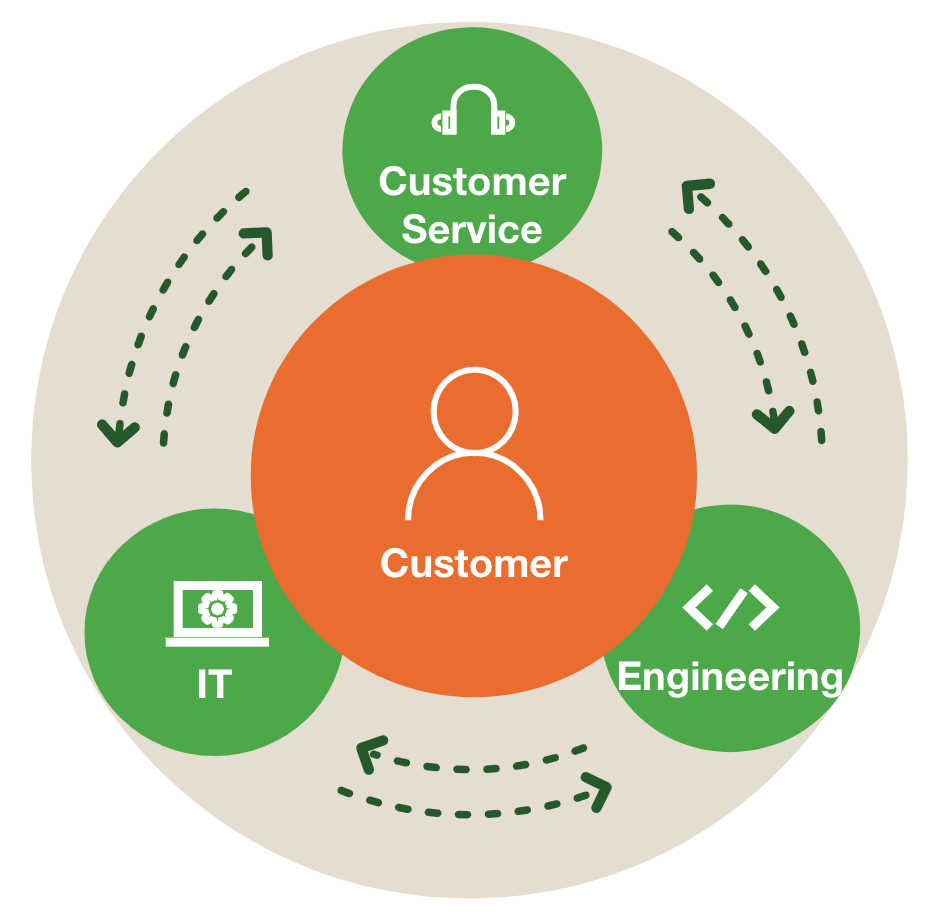Metrics

Organizations that have gone through a digital transformation — or have embraced a technical operating model such as DevOps — have likely already worked through realigning goals and incentives across many technical teams. This includes customer service teams and their goals, along with the goals of product teams, and opens the door to accelerate feedback and improvements for products and services. Technical teams that operate with customer-focused goals will find customer service teams invaluable for their access to customers and customer feedback.
Customer service (and traditional operations) teams might find themselves at odds with the goals of application development teams. Lack of awareness, knowledge, and empowerment are the main things that contribute to teams feeling a disconnect. Change is often the cause of incidents and outages, leading to negative customer interactions. But change is also necessary for new features, bug fixes, and new customer experiences.
Your teams should be working in sync to ensure there is awareness of changes and improvements and how those are improving the overall customer experience and satisfaction of your products.

CSAT, NPS, and FCR#
Customer service plays a key role in improving customer satisfaction (CSAT). You may already be managing customer service functions via a CSAT survey after customers contact your customer service team. Giving your customer service teams more ways to be proactive around incidents can improve customer satisfaction.
Tip
Reach out proactively to VIP customers during incidents and escalate key accounts during triage.
How your organization handles incidents can impact brand loyalty — both positively when things are handled well and negatively when things are handled poorly. Your team might be measuring this impact via the Net Promoter Score, or NPS. NPS differs from CSAT in that it is really asking your customers how likely they are to recommend your product or service to someone else. Providing good customer service and proactive communications during incidents makes a positive recommendation more likely.
Customer service teams that are only incentivized to close tickets as fast as possible are less likely to measurably contribute to improvements in your organization’s overall goals. The feedback loop required for a mature software development life cycle needs the customer service team to operate effectively.
Full-case ownership directly leads to higher CSAT scores by increasing First Contact Resolution (FCR). Customers don’t want multiple interactions, the expectation is increasingly becoming single call resolution. When agents have more visibility and context into whether backend systems are impacted, they are able to communicate with customers about the existing incident and the progress being made towards resolution — without the customer having to call back in or get escalated to the next tier.
MTTA and MTTR#
Everyone in your organization should be incentivized to minimize the impact of incidents and outages across the digital product space. Teams working to improve their incident response capabilities often include two metrics: mean time to acknowledge (MTTA) and mean time to resolve (MTTR) in their goals. Reducing these two numbers means shortening the time it takes to recognize an incident and the time it takes to fully resolve the incident.
Because these two measures can be somewhat blunt instruments, your teams may also consider looking at MTTA and MTTR based on the incident severity. This allows your teams to prioritize improving response times for the highest severity incidents first, having the greatest impact on overall customer experience.
Customer Success, Support, and Engineering have different metrics and that is the problem... so you never end up driving the customer experience...but what you really need is each team to be integrally measured on shared customer outward facing metrics vs. customer inward facing metrics, focused on delivering the right customer experience and customer outcomes.
-- Manjula Talreja, Chief Customer Officer, PagerDuty
